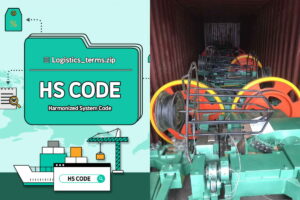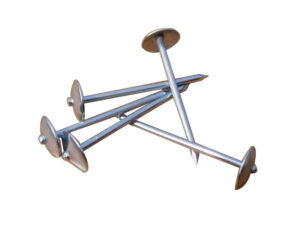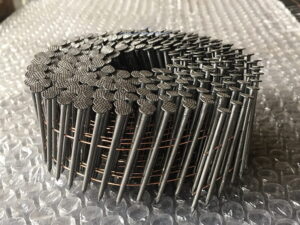Have you ever wondered how all those nails that hold our houses and furniture together are made? As a professional nail making machine manufacturer, I decided to dig into the fascinating world of nail manufacturing machinery.
In this detailed guide, you’ll learn:
- What a nail making machine is and how nails are manufactured
- A step-by-step walkthrough of the nail production process
- The different types of nail making equipment
- Key nail machine components and how they work
- Safety tips when operating nail machinery
- Fun facts about the history of nail manufacturing
By the end, you’ll be a nail machine expert!

An Introduction to Nail Making Machinery
Nail making machines are the unsung heroes that produce the billions of nails used around the world every year.
These clever pieces of technology transform spools of steel wire into nails through a series of automated machining processes. It enables high-volume nail manufacturing with precision and efficiency.
Here’s a high-level overview of how an automatic nail making machine works:
- Wire Feeding: The machine pulls wire from coils or spools and straightens it.
- Cutting: The wire is cut into individual nail lengths by an automated cutter.
- Nail Head Formation: Dies form the head of the nail and sharpen the point.
- Finishing: Nails may go through additional processes like polishing or coatings.
- Quality Check: Sensors identify defective nails, ensuring only good nails are used.
- Packaging: Nails are collected, aligned and packaged for shipment.
Now let’s look at this process more closely…
How Does a Nail Making Machine Work: Step-By-Step Process
There are two main types of nail making machinery:
- Wire Nail Machines: Produce nails from steel wire. Most common today.
- Cut Nail Machines: Make nails by shearing nail blanks from metal plates. More historical.
We’ll focus mostly on modern wire nail machines here. But we’ll also look briefly at the cut nail production process too.
1. Pick Your Nail Machine Type
The first step is deciding what type of nail making machine you need. This depends on:
- Production Volume: Low, medium or high volume manufacturing?
- Nail Types: What sizes and nail types do you need to produce?
- Budget: Lower capacity = lower machine cost.
Once you’ve determined your requirements, you can select the right nailer to match.
2. Set Up The Nail Making Machine
Next, the nail machine needs to be installed and configured.
Location
- Place on sturdy, vibration-free foundation
- Leave room for feeding wire coils & collecting finished nails
Configuration
- Attach appropriate cutting blades, dies & tooling
- Set nail length, head style, feed rate etc.
- Connect power, air lines & control wiring
This prep work ensures smooth nail manufacturing.
3. Feed In Steel Wire
The fun begins! Steel wire is the raw material that gets transformed into nails by these machines.
Wire Properties
The steel wire fed into nail machines has these properties:
- High tensile strength
- Consistent diameter (gauges differ)
- Low impurities
- Smooth surface finish
Feeding The Wire
There are two ways wire gets fed into the nailer:
1. Coil Feeding
- Most common method
- Continuous wire supplied from coils
- Coils mounted on powered decoilers
2. Straight Length Feeding
- Cut lengths of wire fed into nailer
- Lower capacity
- Operator has to feed wire pieces
Both methods work. But coil feeding enables high-volume automated production.
4. The Nailing Process Begins!
Now the nail making magic happens! Here are the key steps:
Straighten The Wire
As it’s pulled off the coil, the wire passes through a set of roller dies. This smooths out any bends and kinks, ensuring straight nails.
Cut The Wire
Next, a guillotine-style cutter slices through the wire. The distance between cuts determines the nail length.
Form The Nail Head
The cut length of wire gets gripped between a punch and die. As they come together, the head of the nail is formed.
Sharpen The Nail Tip
A similar process forms the pointed tip of the nail using shaped dies.
Dozens of nails per minute are produced by repeating these steps. The exact speed depends on the machine model.
Pretty cool right?!
Now let’s look closer at some key components…
5. Inside a Nail Making Machine
Nail manufacturing equipment consists of various mechanical components engineered to work together:
Wire Straighteners
A series of roller dies smooth and straighten wire right before cutting.
Feed Grippers
These mechanized jaws grip the wire so it stays rigid for the next phase.
Cutting Blades
Hardened steel guillotine blades slice wire into nail lengths.
Punch Tooling
Punches and dies mold and cut steel to form the nail head and point.
Nail Receivers
Collects finished nails and feeds into next stage.
Now let’s look at some additional downstream processes…
6. Post-Forming Finishing
In some cases, additional steps are required after initial nail forming:
a) Nail Polishing
A rotating drum tumbles nails with abrasives, creating a uniform finish and sheen.
b) Surface Coatings
Nails may get sprayed or dipped to improve corrosion resistance or gripping power. Some examples:
- Hot-dip galvanizing
- Zinc flake coating
- Cement coating
- Epoxy coating
c) Heat Treatment
Heating nails improves hardness and durability for high strength applications.
Applying these secondary finishes provides added functionality.
7. Quality Control
Quality checks at multiple points ensure nails meet specifications:
Dimensional Inspection
Checks nail lengths, head size, and straightness using optical scanning technology. Defective nails get automatically rejected by the system.
Production Monitoring
Sensors monitor manufacturing rate, machine faults, downtime etc. for process control.
Final Sampling
Samples from finished batches tested to reconfirm nail rating, corrosion resistance and performance meet quality standards.
Rigorous QC maximizes yield of quality nails.
8. Packing & Shipping
The last step is safely packing nails for shipment to customers:
Counting & Batching
Vibratory bowls count and group nails into the required quantities for packing.
Add Labeling
Printed labels specify nail sizes, ratings, production codes and other details.
Package
Cardboard boxes, drums or crates used for packaging depending on nail sizes and volumes.
Palletizing
Boxes loaded securely onto pallets for easy handling and transport.
With that, production is complete!
Now that you understand modern wire nail machines, let’s go old school and look briefly at traditional cut nail manufacturing…
Inside A Cut Nail Machine
The cut nail process represents classic nail making technology.
It uses heavy-duty mechanical presses to stamp nails from metal plates. Though rare today, some manufacturers still rely on this method.
Here’s the basic process:
1. Nail blanks get punched out of steel plates
2. A heading unit forms the nail head
3. Points get shaped using profiled dies
4. A scraper removes any burrs
5. Hardening & tempering enhances strength
6. Additional polishing or finishing
Compared to wire nail machines, cut nail plant requires heavier machinery and more handling. But some specialty nail products like masonry spikes still depend on the cut nail process.
Now let’s get into safety with nail making equipment…
Nail Machine Safety Tips
Sharp cutting blades, heavy machinery and speedy mechanics make injury prevention critical. Some key precautions include:
- Machine Guarding – Enclose dangerous areas
- Lockout/Tagout – Isolate energy before maintenance
- Personal Protection – Wear gloves, safety glasses etc.
- Training – Educate operators on risks
- Inspections – Check for issues during operation
- Good Housekeeping – Prevent slip/fall hazards
Plus, always follow the manufacturer’s safety instructions. Staying vigilant keeps the nails – and fingers! – flowing.
Key Takeaways On How Nail Machines Work
Here are my main tips on nail manufacturing:
✅ Modern plants use automated wire nail machines that form, cut, shape and finish nails from steel wire at high speeds
✅ Traditional cut nail machinery punches blanks from plates then headers and tips get formed
✅ Both coil-fed or straight length wire feeding is used
✅ Key nail machine components: feed system, cutters, punch/dies, straighteners etc.
✅ Additional finishing like galvanizing, heat treating or epoxy coating adds functionality
✅ Nail machines must have proper safeguards and staff should be well-trained
So I hope you found this guide helpful and maybe even inspiring! If you have any questions on nail making equipment or manufacturing technology in general, let me know in the comments.
And if you enjoyed this deep dive on nails, feel free to share it with your friends!






